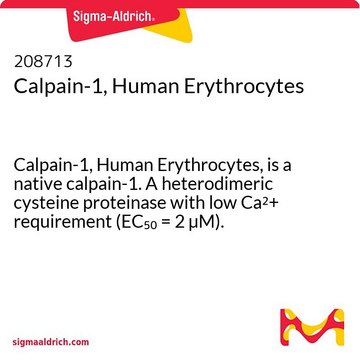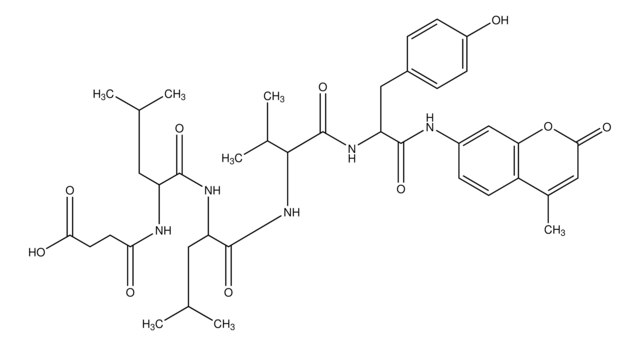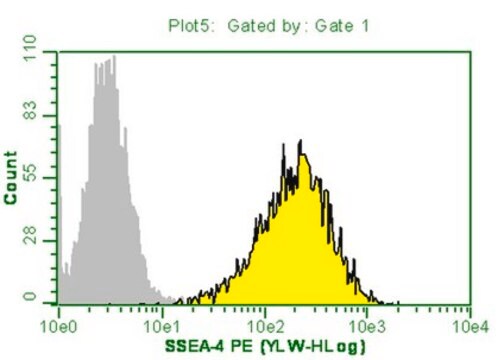Recommended Products
usage
sufficient for 96 tests
Quality Level
packaging
pkg of 1 96-well plate(s)
manufacturer/tradename
Calbiochem®
storage condition
OK to freeze
avoid repeated freeze/thaw cycles
protect from light
input
sample type serum
sample type plasma
sample type cell lysate
detection method
fluorometric
shipped in
wet ice
General description
Components
Warning
Specifications
Preparation Note
Storage and Stability
Analysis Note
Calpain 1
Other Notes
Glading, A., et al. 2000. J. Biol. Chem.275, 23908.
Ishikara, I., et al. 2000. Neurosci. Lett.279, 97.
Nakagawa, T. and Yuan, J. 2000. J. Cell Biol.150, 887.
Pariat, M., et al. 2000. Biochem. J.345, 129.
Pink, J.J., et al. 2000.Exp. Cell Res.255, 144.
Wang, K.K. 2000. Trends Neurosci.23, 20.
Reddy, R.K., et al. 1999. J. Biol. Chem.274, 28476.
Leist, M., et al. 1998. Mol. Pharmacol.54, 789.
Melloni, E., et al. 1998. J. Biol. Chem.273, 12827.
Villa, P.G., et al. 1998. J. Cell Sci.111, 713.
Wood, D.E., et al. 1998. Oncogene17, 1069.
Kubbutat, M.H. and Vousden, K.H. 1997. Mol. Cell Biol.17, 460.
Molinari, M. and Carafoli, E. 1997. J. Membr. Biol.156, 1.
Sorimachi, H., et al. 1997. Biochem. J.328, 721.
Squier, M.K. and Cohen, J.J. 1997. J. Immunol.158, 3690.
Aoki, K., et al. 1986. FEBS Lett.205, 313.
Ohno, S., et al. 1986. Nucleic Acid Res.14, 5559.
Legal Information
Signal Word
Danger
Hazard Statements
Precautionary Statements
Hazard Classifications
Repr. 1B
Storage Class Code
6.1C - Combustible acute toxic Cat.3 / toxic compounds or compounds which causing chronic effects
Certificates of Analysis (COA)
Search for Certificates of Analysis (COA) by entering the products Lot/Batch Number. Lot and Batch Numbers can be found on a product’s label following the words ‘Lot’ or ‘Batch’.
Already Own This Product?
Find documentation for the products that you have recently purchased in the Document Library.
Our team of scientists has experience in all areas of research including Life Science, Material Science, Chemical Synthesis, Chromatography, Analytical and many others.
Contact Technical Service









